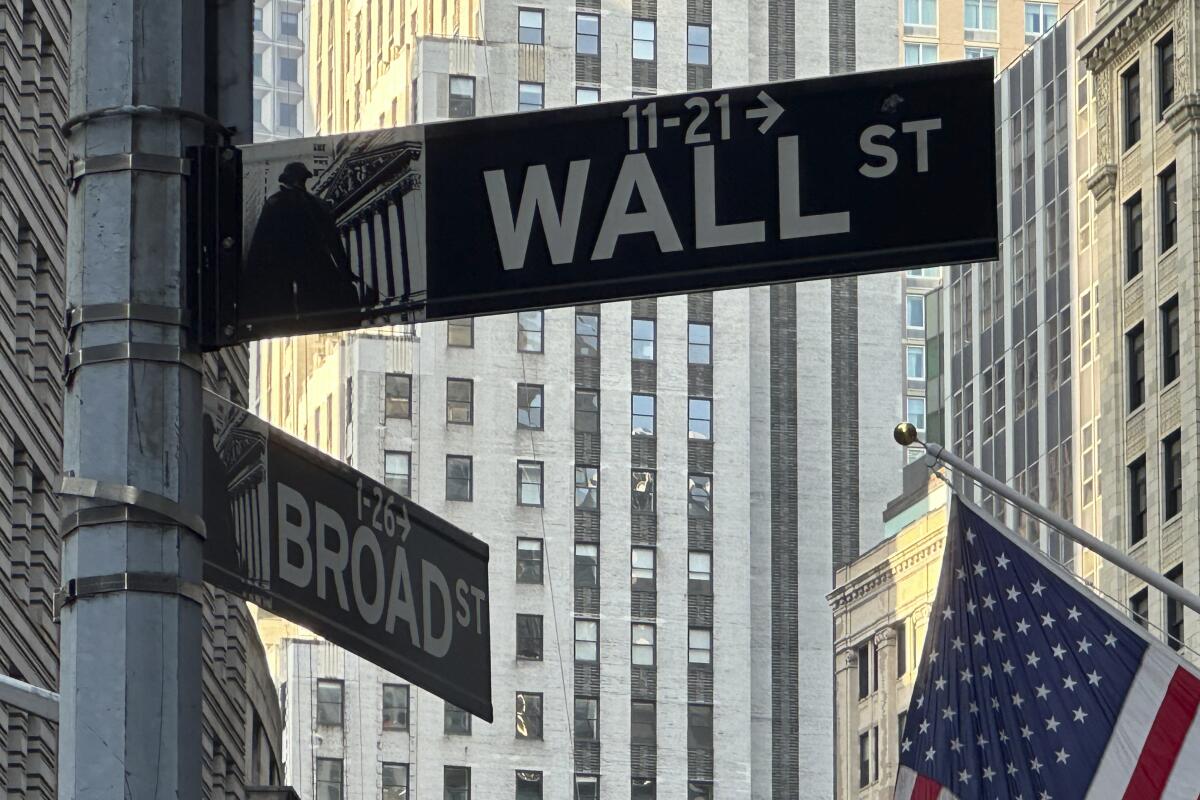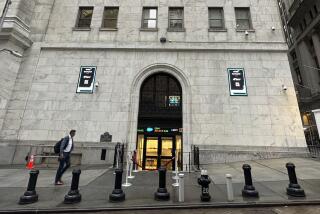A widespread rally sends Wall Street to records, and the Dow leaps 740 points

NEW YORK — U.S. stocks rallied to records, again, on Tuesday. What made this time more jubilant was how many companies joined the party.
The Standard & Poor’s 500 climbed 0.6% to set an all-time high for the 38th time this year. Unlike other record-setting days, Tuesday saw a widespread rally in which nearly 9 out of 10 stocks in the S&P 500 rose, instead of just the handful of influential Big Tech stocks that have been behind most of this year’s returns.
The Dow Jones industrial average leaped 742 points, or 1.8%, to lead the market a day after setting its own record. The Nasdaq composite lagged with a gain of 0.2%, as the stars dimmed for some of the year’s biggest winners.
UnitedHealth Group drove the market after reporting better profit for the spring than analysts expected, despite losses due to a massive cyberattack. Its stock rose 6.5%, and the healthcare company reported growth in the number of people served at both its Optum and UnitedHealth businesses.
Bank of America rallied 5.3% after it likewise reported stronger profit for the latest quarter than forecast. It benefited from growth at its investment banking business.
They helped offset drops for a handful of massive tech stocks, whose sizes give their movements an outsize effect on indexes. Nvidia, for example, was the heaviest single weight on the S&P 500 after falling 1.6%.
But that decline was just a minor pullback compared with how much the chip company’s stock rocketed earlier amid Wall Street’s frenzy around artificial intelligence technology. Nvidia shares are still up 155.2% for the year so far.
Some market watchers have been hoping for just such a broadening of the stock market’s performance, because a market with many stocks rising is seen as healthier than one driven by just an elite few stocks.
Only 24% of companies in the S&P 500 had been beating the index so far this year, according to Solita Marcelli, chief investment officer, Americas, at UBS Global Wealth Management. That’s down from last year’s already low tally of 26%.
In another signal of more companies participating in the market’s rally, stocks of smaller companies also outpaced their larger rivals after having lagged for a while.
The Russell 2000 index of smaller stocks jumped 3.5%, nearly six times the S&P 500’s gain. It’s coming off its best week since November, as stocks from other beaten-down corners of the market also rally following signals that the U.S. economy remains solid and that easier interest rates may soon be on the way.
Several big winners from the day before, which benefited from heightened expectations for former President Trump to retake the White House, gave back some of their immediate jumps after Trump’s dodging of an assassination attempt over the weekend.
Trump Media & Technology Group fell 9.1%, a day after leaping 31.4%. Shares of the company behind Trump’s Truth Social platform regularly swing by big percentages each day, up or down.
All told, the S&P 500 rose 35.98 points to 5,667.20. The Dow jumped 742.76 points to 40,954.48, and the Nasdaq composite advanced 36.77 points to 18,509.34.
In the bond market, some of the prior day’s moves also reversed themselves. Longer-term yields sank more than shorter-term yields after a report showed sales at U.S. retailers held firm last month despite economists’ expectations for a decline.
The yield on the 10-year Treasury dropped to 4.16% from 4.23% late Monday. It’s fallen from 4.70% in April, which is a major move for the bond market and has given a solid boost to stock prices.
Yields have eased on rising expectations that inflation is slowing enough to convince the Federal Reserve to begin cutting interest rates soon. The Fed has been keeping its main interest rate at the highest level in more than two decades in hopes of slowing the economy just enough to get inflation fully under control.
Tuesday’s stronger-than-expected data on retail sales may give Fed officials some pause, because too-strong activity could keep upward pressure on inflation. But traders are still betting on a 100% probability that the Fed will cut its main interest rate in September, according to data from CME Group. A month ago, they saw a 70% chance.
Risks lie on both sides of the tightrope that the Federal Reserve is currently walking. The central bank hopes to ease the brakes that it’s applied to the economy through high interest rates at the precisely correct time. Easing too soon could allow inflation to reaccelerate, but easing too late could cause a recession. Tuesday’s data on retail sales point to an economy that is remaining resilient so far.
Choe writes for the Associated Press.
More to Read
Inside the business of entertainment
The Wide Shot brings you news, analysis and insights on everything from streaming wars to production — and what it all means for the future.
You may occasionally receive promotional content from the Los Angeles Times.










